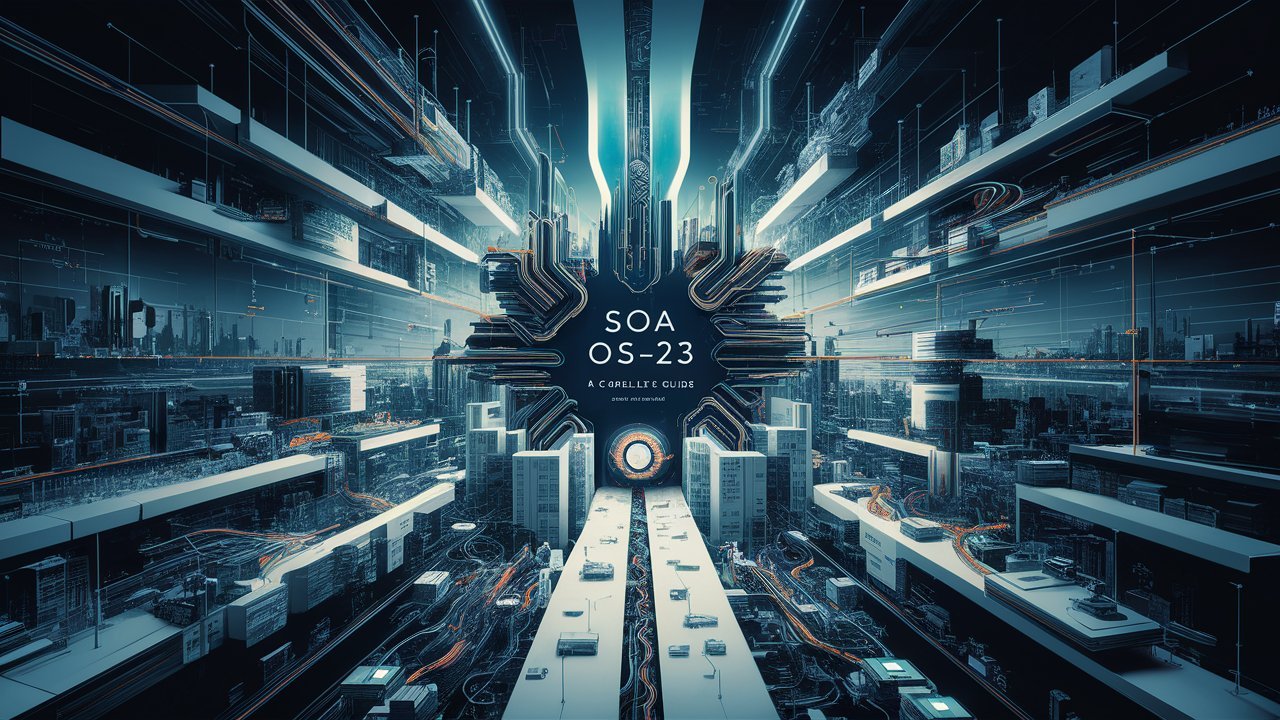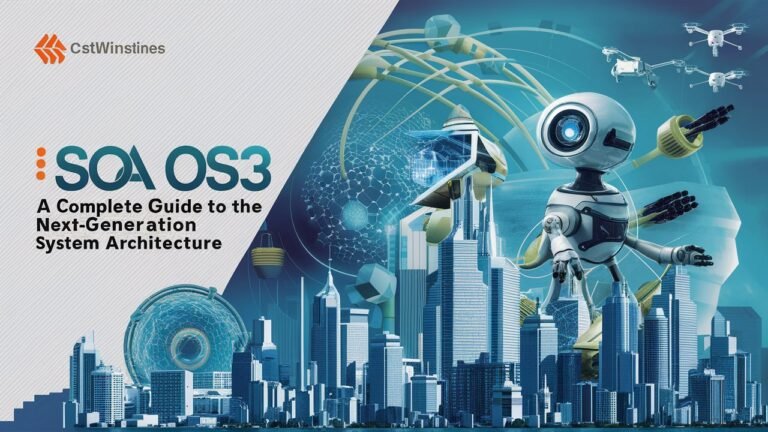In the ever-evolving world of technology and digital infrastructure, SOA OS23 has emerged as one of the most discussed topics. With the rise of cloud-native applications, distributed systems, and enterprise integration, businesses are seeking more flexible and scalable frameworks. SOA OS23 represents a revolution in Service-Oriented Architecture (SOA), blending modularity, security, automation, and cloud optimization into one powerful operating structure. It is specifically designed to support modern enterprises that demand high levels of resilience, agility, and seamless connectivity across different platforms.
This comprehensive article will walk you through every detail of SOA OS23, from its architecture and features to its advantages, applications, and impact on industries worldwide.
What is SOA OS23?
SOA OS23 is an advanced Service-Oriented Architecture operating system designed to enable interoperability and integration across multiple digital platforms. Unlike traditional frameworks, SOA OS23 prioritizes cloud adoption, microservices deployment, and automation, making it the perfect solution for organizations aiming for digital transformation.
This operating structure is built to:
-
Support distributed workloads.
-
Enable API-driven connectivity.
-
Deliver real-time scalability and monitoring.
-
Ensure security and compliance across systems.
In short, SOA OS23 is the backbone for enterprise-grade digital ecosystems.
Core Features of SOA OS23
1. Modular Architecture
The modular design of SOA OS23 ensures that enterprises can deploy, scale, and customize services independently. Each module operates autonomously, allowing organizations to avoid downtime and achieve maximum flexibility.
2. Cloud-Native Compatibility
One of the strongest features of SOA OS23 is its cloud-native support. It seamlessly integrates with AWS, Azure, Google Cloud, and hybrid cloud platforms, ensuring smooth container orchestration with Kubernetes and Docker.
3. Enhanced Security Protocols
With rising cyber threats, SOA OS23 embeds advanced security layers such as end-to-end encryption, zero-trust policies, and AI-driven threat detection. These features make it a trusted solution for industries handling sensitive data.
4. Real-Time Monitoring and Analytics
SOA OS23 provides advanced monitoring dashboards powered by AI, enabling businesses to track performance, bottlenecks, and service dependencies in real time.
5. API-Centric Framework
At its core, SOA OS23 is built around API-first design, ensuring smooth communication between different applications, services, and platforms.
Benefits of Implementing SOA OS23
Increased Business Agility
By leveraging microservices and modularity, businesses can adapt to changing market conditions faster and launch new digital services without heavy reconfigurations.
Scalability Without Limits
SOA OS23 supports on-demand scaling, ensuring enterprises can handle peak traffic loads efficiently, making it ideal for e-commerce, fintech, and streaming platforms.
Reduced Operational Costs
Through automation, cloud optimization, and resource sharing, SOA OS23 lowers infrastructure and maintenance costs, delivering long-term ROI.
Future-Proof Digital Transformation
As industries evolve toward AI, IoT, and blockchain integration, SOA OS23 serves as a future-ready framework, enabling smooth adoption of emerging technologies.

SOA OS23 vs Traditional SOA Models
| Feature | Traditional SOA | SOA OS23 |
|---|---|---|
| Deployment | On-premises & rigid | Cloud-native & flexible |
| Scalability | Limited | Unlimited with microservices |
| Security | Basic protocols | Advanced AI-driven threat detection |
| Integration | Manual & slow | API-first, automated, seamless |
| Performance | High latency under load | Optimized for real-time workloads |
Applications of SOA OS23 Across Industries
1. Banking and Finance
In fintech and banking, SOA OS23 enables secure transaction processing, fraud detection, and compliance management, supporting 24/7 operations without disruption.
2. Healthcare
Hospitals and healthcare providers use SOA OS23 for electronic health record integration, telemedicine platforms, and AI-driven diagnostics, ensuring patient data security and interoperability.
3. E-Commerce
From payment gateways to inventory management and personalized recommendations, SOA OS23 ensures fast, scalable, and secure digital shopping experiences.
4. Telecommunications
Telecom operators deploy SOA OS23 to handle large-scale customer data, real-time billing, and 5G infrastructure support, ensuring seamless connectivity and reliability.
5. Government and Public Sector
SOA OS23 enhances digital governance, citizen service portals, and cross-departmental data sharing with strong compliance and transparency features.
Why Enterprises Are Migrating to SOA OS23
The digital shift is pushing enterprises to modernize their IT infrastructure, and SOA OS23 is becoming the preferred choice because it:
-
Delivers flexible integration with legacy systems.
-
Provides faster time-to-market for new applications.
-
Strengthens data protection and compliance readiness.
-
Ensures seamless adoption of AI, ML, and IoT-driven applications.
With digital ecosystems expanding rapidly, SOA OS23 is not just an upgrade but a necessity for organizations seeking sustainable growth.
Future of SOA OS23
The future of SOA OS23 lies in its ability to evolve with cutting-edge technologies. As blockchain, quantum computing, and AI-driven automation mature, SOA OS23 will integrate them to offer next-level innovation. Enterprises investing in SOA OS23 today are future-proofing their digital assets for the next decade.
Conclusion
SOA OS23 is a groundbreaking step in modern service-oriented architecture. Its modular framework, cloud-native integration, strong security, and unlimited scalability make it the ultimate choice for enterprises aiming for digital transformation and competitive advantage. Whether in finance, healthcare, telecom, or government, SOA OS23 ensures efficiency, agility, and future-readiness.
For any organization that wants to stay ahead in the digital race, adopting SOA OS23 is no longer optional—it is essential.
FAQs About SOA OS23
Q1. What does SOA OS23 stand for?
SOA OS23 refers to a next-generation Service-Oriented Architecture Operating System designed for cloud-native, modular, and secure digital environments.
Q2. How is SOA OS23 different from traditional SOA models?
It offers microservices, API-first architecture, AI-driven security, and cloud-native compatibility, unlike traditional SOA, which is more rigid and less scalable.
Q3. Which industries benefit most from SOA OS23?
Industries like finance, healthcare, e-commerce, telecom, and public governance benefit the most due to its scalability and interoperability.
Q4. Is SOA OS23 future-proof?
Yes, SOA OS23 is designed to integrate seamlessly with AI, IoT, blockchain, and next-gen technologies, making it highly future-ready.
Q5. Why should enterprises migrate to SOA OS23 now?
Because digital transformation is accelerating, enterprises that adopt SOA OS23 today gain a competitive edge, cost savings, and innovation opportunities.
